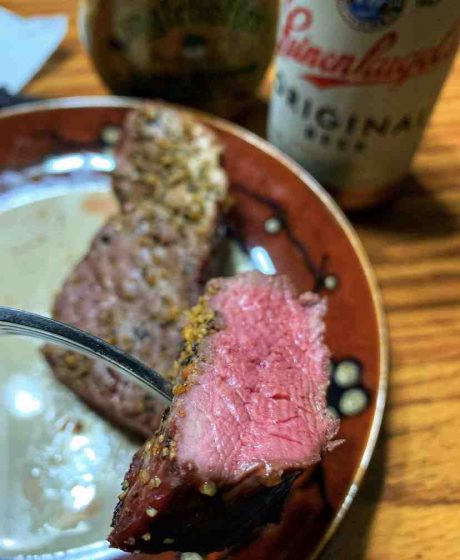What is beef purge?
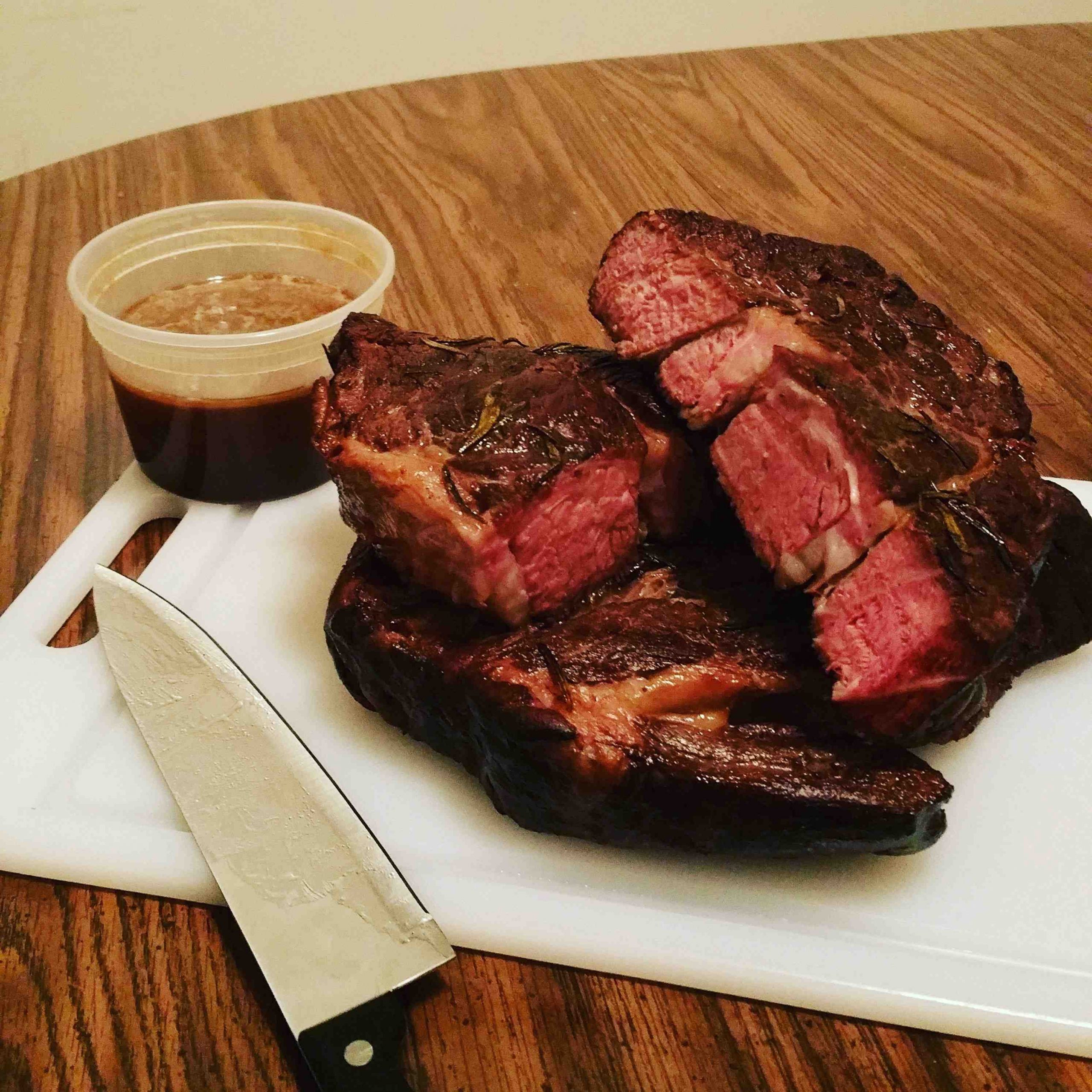
The liquid sometimes found at the bottom of meat packages is what meat scientists call a “cleanse,” which is a combination of water and meat protein that drains from the meat. One of these proteins, water-soluble myoglobin, gives meat its red color, which is why water is also red or dark pink in color.
Is there blood in the meat we eat? Turns out, the “blood” on your steak isn’t blood at all. This is myoglobin, the protein that delivers oxygen to the animal’s muscles. This protein turns red when meat is cut, or exposed to air.
What is the liquid that comes out of beef?
The red liquid is actually myoglobin, a protein found only in muscle tissue. Myoglobin carries oxygen through the muscles and contains the red pigment – which is why muscle tissue is red. As the steak is cooked, the myoglobin darkens – which is why the more “cooked” the meat, the more gray it looks.
What are meat juices called?
The “juice” in your steak doesn’t look and taste like real blood, because it doesn’t; it is called myoglobin, and it is a protein found only in muscle tissue. Like its cousin hemoglobin, which carries oxygen in the blood, myoglobin’s job is to carry oxygen through the muscles.
What is the liquid that comes from ground beef?
The blood that appears to be liquid on your hamburger packaging isn’t actually blood, it’s myoglobin. Almost all the blood is removed from the carcass within the first few minutes of the harvesting process. Myoglobin is a heme iron-containing protein found in muscles that stores oxygen and gives meat its color.
What does it mean to purge meat?
Drip and/or purge refers to the high protein liquid that is missing from fresh meat. This particular definition applies to fluids that are lost from meat without the addition of mechanical forces other than gravity.
What is purge in cooking?
Juices that come out of fresh meat, cured or cooked meat after packaging. The juice remains in the package when opened.
What causes purge in meat?
So, water seeps out of the meat over time. When water seeps out, the protein that gives meat its color (myoglobin) comes out with the water. The protein gives color to the cleanse. Although it is similar to the protein that gives blood its color (hemoglobin), it is not blood.
What causes meat to purge?
As meat ages and is more and more handled (cut, shipped, packaged, etc.), protein sponges lose their ability to retain water. So, water seeps out of the meat over time. When water seeps out, the protein that gives meat its color (myoglobin) comes out with the water.
Is it safe to eat a rare steak?
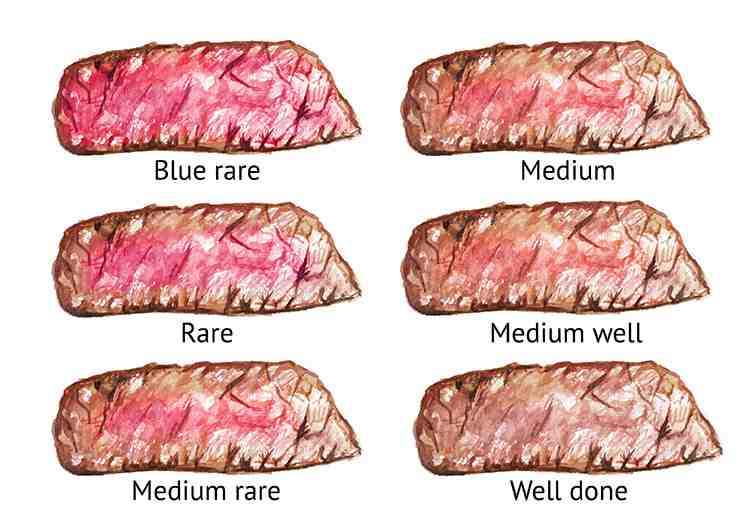
No. The United States Department of Agriculture recommends not eating or tasting raw or undercooked meat. Meat may contain harmful bacteria. Cooking thoroughly is important to kill any bacteria and viruses that may be present in the food.
Can you get sick from eating a rare steak? No risk of disease Any meat purchased from a reputable source carries a very low risk of salmonella, E. coli, or other dreaded diseases associated with undercooked meat. So eating that medium or rare steak won’t make you sick.
Why is it OK to eat rare steak?
Eating rare steaks is like giving your body a direct jolt of iron and phosphorus. Both of these nutrients are useful for preventing fatigue. If you eat rare steaks in moderation, the iron in the meat increases the oxygen in your blood, and the phosphorus gives strength to your bones.
Is it healthy to eat rare steak?
The answer: In terms of nutrition – protein, iron, zinc, etc. – there is no difference between a steak cooked medium rare or well done. The concern is that meat cooked to perfection contains more potential carcinogens called heterocyclic amines (HCAs) than meat cooked for a shorter time.
What happens if you eat steak too rare?
While eating rare meats doesn’t guarantee anything bad will happen to you, it does increase your risk of developing foodborne illnesses, such as E. coli, salmonella, or listeria.
Why does my steak taste like blood?
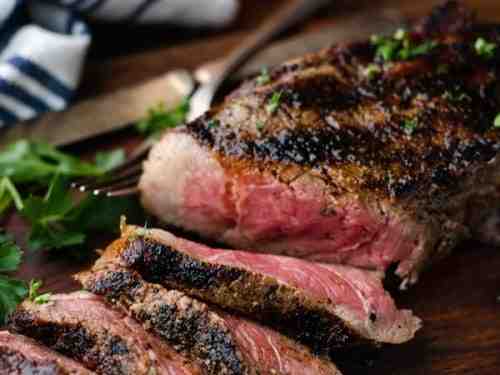
If your beef has honesty blood in it, take it to your butcher. Most likely, what you are seeing/tasting is myoglobin, which has a slightly metallic taste when uncooked. You can get rid of this in two main ways: osmosis and heat.
Do steaks taste like blood? Come to think of it, steak doesn’t taste like real blood – if it did, it probably wouldn’t have become such a popular dish. The red liquid is actually myoglobin, a protein found only in muscle tissue. Myoglobin carries oxygen through the muscles and contains the red pigment – which is why muscle tissue is red.
Why does my steak taste like metal?
During wet aging, the meat is in its own liquid which causes the beef to have a wet metallic taste. But wet aging is much more cost effective for the processor.
How do you get rid of metallic taste in food?
Here are some ways you can reduce or temporarily eliminate taste distortion:
- Chew sugar-free gum or sugar-free mints.
- Brush your teeth after eating.
- Experiment with different foods, spices and seasonings.
- Use non-metallic plates, utensils and cookware.
- Stay hydrated.
- Avoid smoking.
Why does meat taste like metal?
A metallic taste in your mouth can be a side effect of a food allergy, especially to shellfish or tree nuts. This is an early sign of anaphylaxis, which can be deadly. If you have (or suspect you have) any such allergies, talk to your doctor about what to do if an allergic reaction occurs – before it strikes.
Is it safe to eat bloody steak?
If we’re talking beef steak, and beef steak only, the decision is that it’s safe to eat pink meat – if it’s rare. The bacteria are mainly on the outer surface of the steak, and don’t penetrate the inside, especially E. coli.
Is it healthy to eat bloody meat?
Whether you do it or not, you should limit your intake of red meat (eg beef, lamb, pork, mutton). Research shows that heavy red meat eaters are at an increased risk of colorectal cancer, type 2 diabetes and coronary heart disease. Cancer experts suggest eating less than 18 ounces a week.
What happens if you eat bloody steak?
Salmonella. Eating undercooked or raw poultry or red meat increases your risk of contracting salmonella. Symptoms include stomach cramps, fever and diarrhea and begin within 12 to 72 hours after consuming contaminated food.
What causes meat to taste like metal?
A metallic taste can indicate a serious illness, such as kidney or liver problems, undiagnosed diabetes, or certain cancers. But these reasons are rare and usually accompanied by other symptoms.
What causes metallic taste in food?
Taste changes and dry mouth (which can cause that metallic taste) are side effects of some medications. The most common causes include antibiotics such as tetracycline, the uric acid drug allopurinol, the psychiatric drug lithium, and some heart medications.
What is the juice in steak?
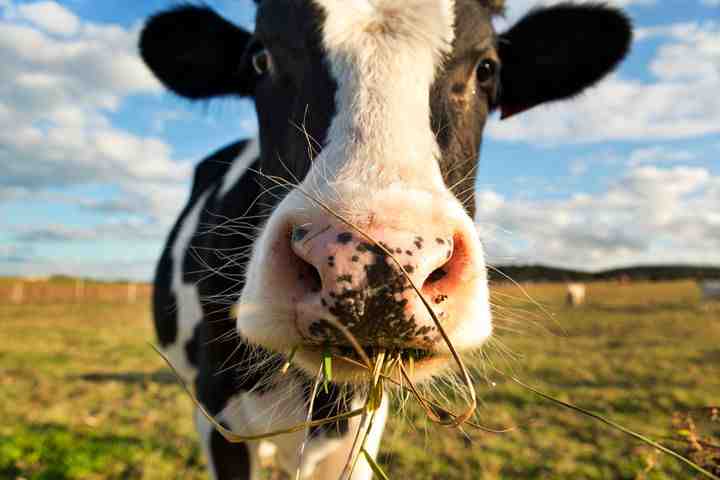
Although Andrés joked that he took some inspiration from Dracula, the juice from the steak isn’t really blood – it’s myoglobin, an oxygen-storing protein that changes color when exposed to heat.
What is the red juice that comes out of the steak? The protein in steak is like a sponge that retains water. As meat ages and is handled or cut, protein loses its ability to retain water. Over time, some of the water is released and the myoglobin flows out with it, giving the liquid a red or pink color.
What is the juice in cooked steak?
The red liquid is actually myoglobin, a protein found only in muscle tissue. Myoglobin carries oxygen through the muscles and contains the red pigment – which is why muscle tissue is red. As the steak is cooked, the myoglobin darkens – which is why the more “cooked” the meat, the more gray it looks.
Is myoglobin in steak good for you?
This is the single most important driving factor in consumers’ decisions to buy meat. Myoglobin is the heme iron-containing protein that gives meat its color, and is a good source of iron. Myoglobin stores oxygen in muscle cells and is similar to hemoglobin which stores oxygen in blood cells.
What is cooked meat juice called?
The drip is the juice that results from cooking meat. If you plan to make a gravy or gravy from pan juice, it’s a good idea to roast the meat to collect as many drips as possible.
What is the juice from a steak called?
This is a solution called “crying” or “cleaning”. It is often mistaken for blood. But if it were true, most of the white meat would leak red too. This is actually the result of freezing the meat during transportation. The juice is a mixture of water and myoglobin.
Is myoglobin in steak good for you?
This is the single most important driving factor in consumers’ decisions to buy meat. Myoglobin is the heme iron-containing protein that gives meat its color, and is a good source of iron. Myoglobin stores oxygen in muscle cells and is similar to hemoglobin which stores oxygen in blood cells.
What are steak juices?
Although Andrés joked that he took some of his inspiration from Dracula, the juice from the steak isn’t really blood – it’s myoglobin, an oxygen-storing protein that changes color when exposed to heat.
Is the juice from steak actually blood?
Yes, you may want to eat meat but blood can make some people nauseous. But actually the red juice in your flesh is not blood. Blood is removed during the slaughtering process and after that very little blood remains in the muscle tissue. The red liquid is water mixed with a protein called myoglobin.
Is blood drained from steaks?
Almost all the blood is removed from the carcass within the first few minutes of the harvesting process. Myoglobin is a heme iron-containing protein found in muscles that stores oxygen and gives meat its color. There is actually a lot of protein and beneficial nutrients in this liquid.
Is meat juice actually blood?
Turns out, it wasn’t blood, but rather a protein called myoglobin, according to Buzzfeed. It is this protein that gives meat and juices their red color, and is normally found in packaging.
Can you eat raw steak?

Beef is in most cases safe to eat raw, as long as you burn the surface of the meat. This is because, in whole cuts of beef, bacterial contamination (such as E. coli) is usually only on the outside.
Can you eat raw steak and not get sick? Raw foods of animal origin, such as beef, are most likely to be contaminated with disease-causing bacteria. Therefore, health authorities advise against consuming raw beef and other meats.
Is it safe to eat steak raw?
Consuming raw beef is dangerous, as it can harbor disease-causing bacteria, including Salmonella, Escherichia coli (E. coli), Shigella, and Staphylococcus aureus, all of which are destroyed by heat during the cooking process (2, 3, 4).
Is it safe to eat rare steak?
“No. The United States Department of Agriculture recommends not eating or tasting raw or undercooked meat. Meat may contain harmful bacteria. Thorough cooking is important to kill bacteria and viruses that may be present in the food.â€
What happens if you eat raw steak meat?
Just like raw chicken and pork, raw beef can be problematic and contains a lot of harmful bacteria. It’s safer than eating raw chicken or pork, but that doesn’t make it 100% safe. Some infections or viruses that can be caused by raw meat include listeriosis, salmonellosis, and E. Coli poisoning.
What happens if you eat slightly raw steak?
Salmonellosis However, eating undercooked steak can lead to ingestion of salmonella bacteria, which causes stomach cramps, fever, and watery diarrhea. The bacteria then spread from your intestines to other parts of your body such as your bones, joints, and bloodstream.
Is it OK if steak is raw in the middle?
Undercooked steaks are usually almost raw. It has been cooked as little as possible and should be warm in the center, browned around the sides, slightly charred on the outside and bright red in the middle. This steak should be tender to the touch, like raw meat, but browned on the outside.
Is it OK to eat steak a little pink?
If we’re talking beef steak, and beef steak only, the decision is that it’s safe to eat pink meat – if it’s rare. The bacteria are mainly on the outer surface of the steak, and don’t penetrate the inside, especially E. coli.
What does myoglobin taste like?
As heme proteins, myoglobin and hemoglobin both carry iron atoms which are responsible for the bloody and slightly ‘metallic’ taste of beef.
What happens to myoglobin during cooking? When cooked, myoglobin separates from the iron and forms a “hemichrome” pigment, also brown in color. When myosin and actin, the protein that drives muscle, are cooked, they open and form intricate knots–a similar chemical process occurs when you cook an egg.
Is the myoglobin the flavor?
Myoglobin is the pigment that is responsible for giving meat its dark red color and more pronounced taste. The color will vary depending on the amount of myoglobin present in the muscle tissue.
Is the red liquid in steak myoglobin?
What liquid comes out of the steak? Even the rarest and reddest steaks don’t actually bleed. Instead, what you see is a combination of water, which makes up about 75 percent of meat, and a protein found in muscle tissue called myoglobin.
What gives meat its flavor?
In general, the taste of cooked meat develops as a result of the interaction of amino acids, peptides, reducing sugars, vitamins and nucleotides from lean components, or their breakdown products, during cooking.
Can you eat myoglobin?
After a few days in the grocery store window, the myoglobin molecules naturally oxidize and the meat eventually turns brown, Savell says. It may look less appealing, but it’s no less safe to eat. “Brown meat doesn’t mean bad,†says Savell. “But [grocery stores] will discount, mark it.
Are muscles red meat?
Exploratorium. There are basically two types of meat: dark and white. Red or dark meat is made up of muscle with fibers called slow twitch. These muscles are used for long-term activities, such as standing or walking, and require a consistent source of energy.
Do red meat have more myoglobin than white?
White and red meat differ in the amount of myoglobin, the protein responsible for the color of meat. Red meat has more myoglobin than white meat, and a higher myoglobin content results in a darker meat color.
Is red juice in steak blood?
What liquid comes out of the steak? Even the rarest and reddest steaks don’t actually bleed. Instead, what you see is a combination of water, which makes up about 75 percent of meat, and a protein found in muscle tissue called myoglobin.
Is the red juice in raw meat blood?
When buying red meat, including steak, many wholesale buyers often find a red liquid on the bottom of the package, which you might suspect is blood. Turns out, it wasn’t blood, but rather a protein called myoglobin, according to Buzzfeed.
Is the pink liquid in steak blood?
When water seeps out, the protein that gives meat its color (myoglobin) comes out with the water. The protein gives color to the cleanse. Although it is similar to the protein that gives blood its color (hemoglobin), it is not blood. The liquid in the packaging is similar to what you find when cooking steaks.
Sources :
